Dear Artist,
Unless you’re already a senior artist and very well established, if you want to pursue a career in the arts in 2022, a CV is a necessary detail. For an artist, it’s only important to include information relevant to your art practice, so you can leave out that second language and the stint you did at Boston Pizza – unless you now make pizza assemblages. These days, a quick search online will produce the CVs of artists of every professional stage. The key word here is professional – or aspiring professional. Of course you don’t have to write one if you’re pursuing art for non-professional reasons.
In defense of the Curricula Vitae, (or “life course”), it’s a nice way to keep track of special projects, exhibitions, workshops, teaching gigs, residencies, awards and education. You need not include commissions unless they’re public ones, or something you feel is important to the type of work you do. Think of your CV as the purest form of your artistic track – it’s the place where your bottom line is less important than the stepping stones of your endeavour. In this way, it can be a kind of personal diary of your efforts. Even in my leanest years, there was always something or other to add there, as a kind of love letter to my own hardscrabble.
CVs get annoying when they take over an artist’s personae – becoming the identity and value of the maker, instead of her art, which may be weak on actual skill or ideas. Keep in mind that everything is relative and depends on what you want. If your goal is to teach in an institution, your level of education matters – maybe even more than your art. Opportunists may appreciate a CV filled with press. If a gallery wants to find out if you’re capable of producing a show, a list of previous exhibition experience is helpful. That old saying, “Your first job is the hardest to get,” is true here, too. Over time, adding items to your list can be like building a stone path. One day, this accumulation will suddenly emerge not so much as a record of achievement, but as a snapshot of where your art took, and is taking you.
Sincerely,
Sara
PS: “The movements which work revolutions in the world are born out of the dreams and visions in a peasant’s heart on the hillside.” (James Joyce, Ulysses)
Esoterica: Think about your dreams for your creative life and also study the paths of artists you admire. There is no one track – for example, a level of education or residency experience or exhibition history does not guarantee a Picasso-esque juggernaut. Nor does hermitting CV-less grant you the mystique of an undiscovered genius. “A man of genius makes no mistakes. His errors are volitional and are the portals of discovery,” wrote James Joyce in Ulysses. The great thing about a CV is that you can make changes for its suitability as you go, and you can change its course. In the end, it’s merely your own humble record of the humble pains you’re taking to grow into something. Some of us are more suited – or must learn – to keep track of these micro-steps. My Dad was clearly too busy painting, and luckily for him, the omission was acceptable for the kind of easel life he wanted. “The supreme question about a work of art is out of how deep a life does it spring.” (James Joyce, Ulysses)
“To learn one must be humble. But life is the great teacher.” (James Joyce, Ulysses)
Featured Workshop
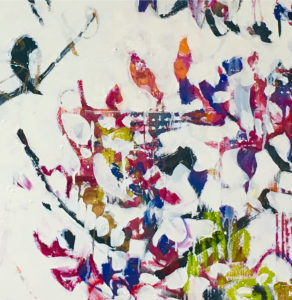 Join Ellie Harold for “Intuitive Painting: Permission to Paint Expressively,” designed especially for mature women artists of all skill levels who wish to explore this medium for soulful exploration. The retreat provides attractive accommodations (your own room!) along with lightly structured activities for centering, relaxation and low stress art-making. You’ll have plenty of free time to muse, paint, write and reflect while enjoying the colors, textures and flavors of San Miguel. This Retreat has the potential to transform not only your art but your life! You’ll return home with a specific art “care plan” to assure support for further creating. Details at www.EllieHarold.com.
Join Ellie Harold for “Intuitive Painting: Permission to Paint Expressively,” designed especially for mature women artists of all skill levels who wish to explore this medium for soulful exploration. The retreat provides attractive accommodations (your own room!) along with lightly structured activities for centering, relaxation and low stress art-making. You’ll have plenty of free time to muse, paint, write and reflect while enjoying the colors, textures and flavors of San Miguel. This Retreat has the potential to transform not only your art but your life! You’ll return home with a specific art “care plan” to assure support for further creating. Details at www.EllieHarold.com.

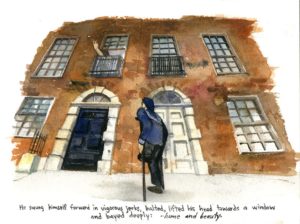
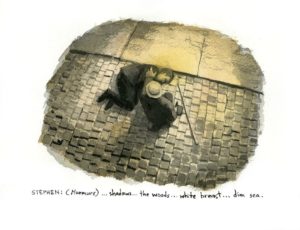
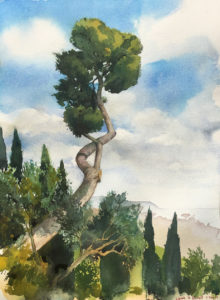
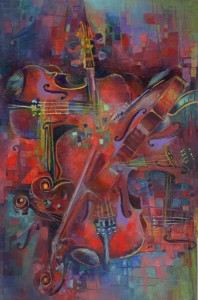
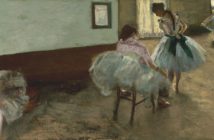
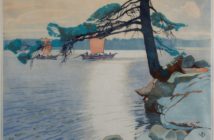
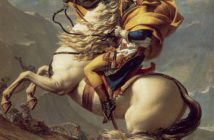
10 Comments
In Tuesday’s release I left a comment. If you missed it, and the story I included, I’ll share it again. Sara Genn had an opening in the city of Houston on Thursday, Sep 12, 2019. Sharon & Michael Segal attended. When you read my story on them, you’ll really appreciate them being there. After you read it, you may ask yourself why does this relate to this story, and the one from Tuesday? I’ll let you ponder it over the weekend. If you still haven’t reached an answer, please reach out to me and I’ll tell you.
https://salmonstudio.wixsite.com/yohnke/post/the-michael-sharon-segal-story
I thank you for reading.
As always, love is the way,
Miles Patrick Yohnke
miles@5-starproductions.com
306.652.3898
306.227.6379
s?
A wonderful follow-on to the previous post!
Aah! Now we have the new take on CVS. Makes sense!
As Graham Nickson, Dean of the New York StudioSchool said many years ago and holds true today ……. ” it’s the ambition for the work not the career”
It’s true for me that the work is what means everything in a creative field- if the work itself is without quality then a “brag sheet” of a CV can’t help you
Why would you *not* mention “that second language”? Whatever your ambitions or profession might be, having a second language is a very valid indicator of your skills, knowledge and perhaps even your cultural scope of awareness. Not mentioning Boston Pizza makes complete sense. Leaving out additional language skills is appallingly bad counsel
Intend to agree with that – especially if you’re looking for a residency is a country where that language is spoken!
Hi Sara, well said. Even though I do not put an unduly amount of weight on my CV, I still have one and have always tried to keep it up to date for those occasions where it is required. My CV is a separate document that is lodged in a digital folder called my “Artist Tool Kit” which also has my biography and artist statement and my five year business/career plan. The CV has come in handing when competing for juried or public art shows and such. But I really like your idea of viewing our CVs “like building a stone path. One day, this accumulation will suddenly emerge not so much as a record of achievement, but as a snapshot of where your art took, and is taking you.” This to me is the best reason to keep that CV current, other than for when it is requested for such things as teaching and grants and competitions. Whether an we are established artists, or just starting out, building this record of our journey one entry at a time it is a useful practice for this reason. I view the CV like one of the braided threads for success as an artist. The other two threads are the actual quality and engagement of our work and our practice of being comfortable standing behind it and getting it out in the world. This can be directly or by presenting the work to public and commercial galleries and in juried competitions. However, the thickest thread for an artist that wants to be an artist (rather than art teacher or an art curator) must be the quality and engagement of the work. The other two threads in the braid are much thinner. These two thinner threads are made of strong fibre and help to protect and shape the raw vulnerability required of artists so that they can keep creating high quality engaging work for a lifetime. Without the ability to primarily focus our time in the studio reaching for something that one does not know yet is there and then secondly finding a way to show it to the world, there is no reason to place a new stone in the CV which takes about an hour each year or half a day if it has been a busy year. The CV is useful and necessary and also simply a record of activity that accumulate into milestones and accomplishments. The CV by structure is historical and a tailored and groomed look at the past. Every time I step up to the easel, I am aware that past successes have limited value in giving my most vulnerable efforts to the work in front of me. At the same time, the CV reminds me that I can confidently say “I have been here before and I know how to step into this space and get the work done to the best of my ability.” Thanks again as always Sara for your thought provoking letters.
I love that you often highlight the difference between the business of art from the practice of art in your posts. They can go together, or not, and it’s refreshing to be reminded of this. Thanks again, Sara.
Everyone should have a CV. LinkedIn is used by my children to keep a public CV for their careers. I might transfer mine to that.
I can see your Dad’s smile at this post, proud of his daughter stepping up and saying.. no, wait a minute Dad, CV’s ARE important. Of course I agree with you, Sara. I, myself, alone on my computer doing artist website grazing, go to sites and click the About Me and CV pages first. I want to know who created the works. I am curious. I just hate writing them. :)